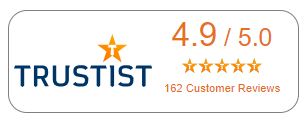The newly released L3 ICT apprenticeship is proving to be a popular one amongst employers and apprentices alike. As this apprenticeship standard is less than 12 months old, information about the End Point Assessment (EPA) is still being understood and finalised by City and Guilds (C&G).
Currently the requirements for the EPA are:
The submission date for an apprentices' portfolio has historically been a date co-ordinated with the apprentice and C&G after the apprentice has entered the Gateway, the event that occurs when an apprentice crosses the threshold of learning period into the end point assessment period. The apprentice must now submit their portfolio in full at the Gateway stage. The portfolio is not formally assessed, but the assessor uses it as a platform to ask relevant questions in the professional discussion.
The Professional Discussion allows the apprentice to tell the assessor all about their job role, and show off what they have been doing. This is a ‘discussion’ not an ‘interview, and there is no limit on the number of questions – the rule is 60 minutes (10% tolerance) - minimum of 10 questions.
The mindset of an apprentice’s grade has changed too. The apprentice is considered to have already attained a pass when they enter into the professional discussion - this seems like an obvious one in retrospect. They should have all the skills and evidence to prove they have met the competencies of the apprenticeship, and have demonstrated the required skill, knowledge, and behaviours
The apprentice's portfolio now must be limited to 5 pieces of evidence. These pieces of evidence can be as long as necessary and will likely contain multiple projects each.
Apprentices will have to complete a Project, Project Report, and a Project Q&A session. To echo what was mentioned earlier, gaps in the apprentices' portfolio cannot be supplemented in the project. The project is no longer supplied to the apprentice like seen in previous apprenticeship standards, but instead, the apprentice, apprenticeship provider, and the apprentice’s employer must co-ordinate a project that must be work-based and be beneficial to the employer. This project can be something such as specific or recurring problem the business is facing, development opportunities, providing an additional service. As this will be a work-based project, the apprentice has 4 whole weeks to work on the project and to report on it.
There is a heavy emphasis on the planning stage of the project, and the apprentice must show that they are capable of estimating, tracking, and maintaining their time on the project. The project report should be quality over quantity, and screenshots, video/audio clips etc are still encouraged, just as it would be for any typical report submitted within their portfolio.
The project Q&A session will be utilised to investigate decisions made during the project, what went well and what didn't, the benefit it has to the employer, as well as any other general skills-based questions, they may have regarding the technology implemented.
The Q&A will take roughly 30 minutes in total. The apprentice is encouraged to bring their report with them and use it to remind themselves of work conducted.
Finally, should an apprentice not manage to pass one of their end point assessment events, they do not need to re-sit the entire EPA process, however, the apprentice will then subsequently be capped to a pass grade for that specific event, restricting what their overall grade can be to a pass and a merit.
EPA results are issued by City and Guilds within 7 working days. Apprentices will be awarded with a declaration of their results by City and Guilds, followed by a certificate from the Institute for Apprenticeships.







